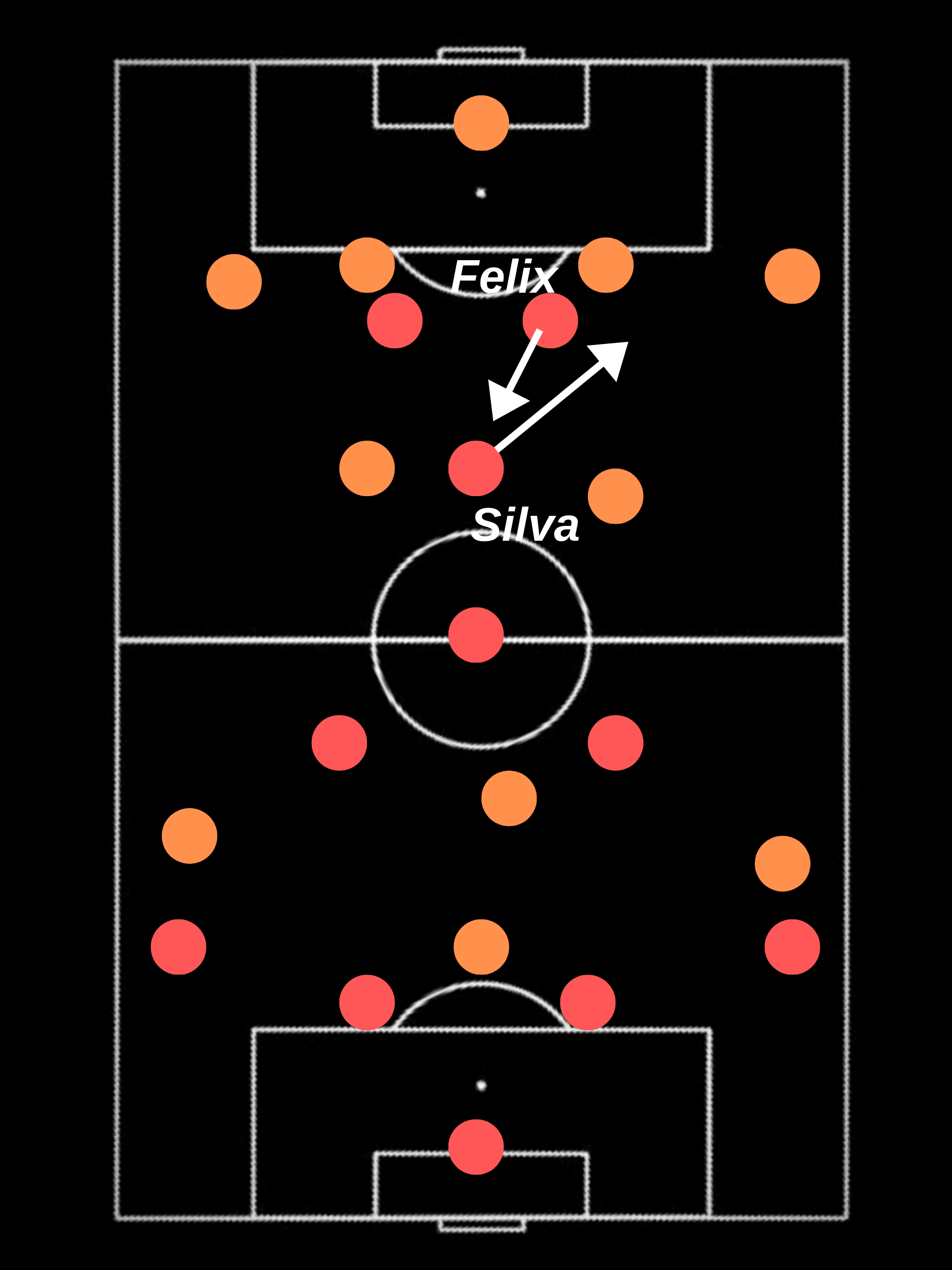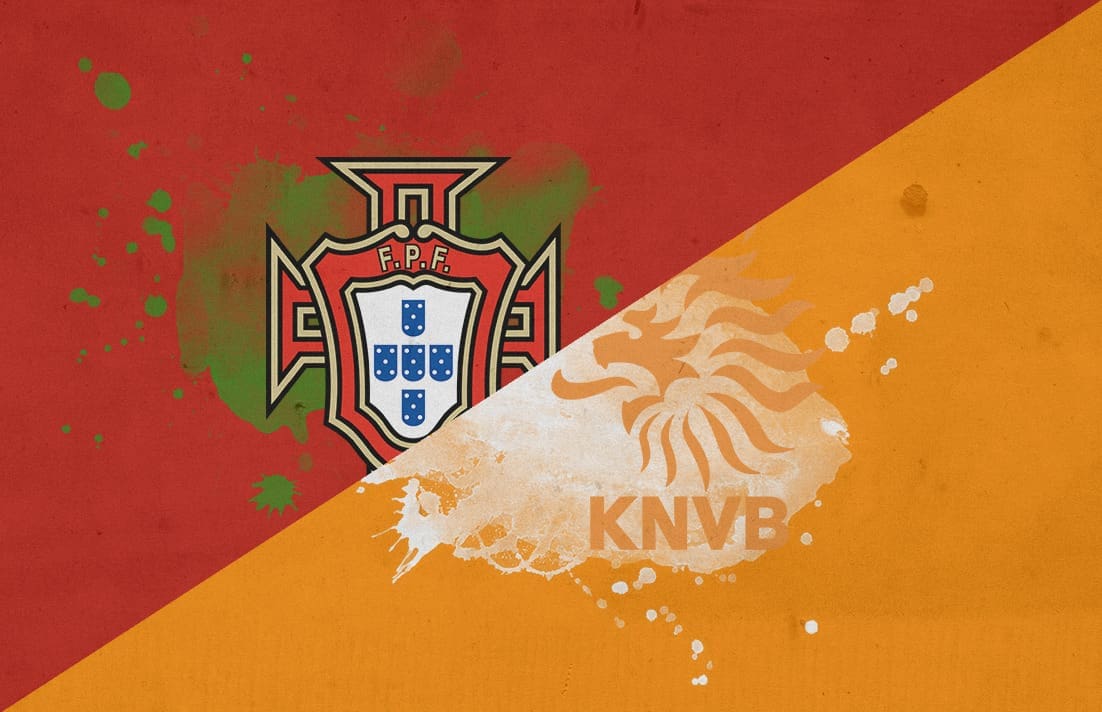As we reach the final of the inaugural UEFA Nations League 2018/19, we now have only two remaining teams. The teams contesting for the honour of becoming the first Nations League champions are Portugal and Netherlands. In this tactical preview, we shall take a look at the possible tactical trends we might see in this anticipated match-up and the key points either team will use to get the upper hand over the other.
Build-up
Portugal come on the back of a 3-1 win against Switzerland where Cristiano Ronaldo shone and he will look to do so this time around, too. Fernando Santos’ team have won three and drawn two of their matches in the Nations League. Scoring eight goals and conceding four, they have looked solid both offensively and defensively.
Koeman’s Dutch side beat England 3-1 in a match that was closer than it looks to be on paper. Out of their five matches in the UEFA Nations League 2018/19, they have scored 11 goals and have conceded five in excellent displays against world-champions France and previous champions Germany. With a young and talented squad, this side has been the revival of the Netherlands national team after some disappointing performances in the recent years.
How the midfield will influence the set-up
“If you win the battle of the midfield, your whole team can win.” – ZiNeDINE ZIDANE
Portugal will look to contain the midfield of the Netherlands and to do this, they will look to contain Frenkie de Jong. To do this a high press of de Jong is crucial to stop him from controlling the midfield. To do this, playing Bernardo Silva on the right wing will be very useful as he has an excellent work-rate. However, he will be played at CAM most probably and he will still look to press de Jong and avoid progression.
Along with this, the young Dutchman prefers playing a bit to the left as an LCDM where he can dribble the most. Carvalho will provide stability at CDM and look to stop de Jong from driving forward. As Portugal mostly play a 4-3-3, Ruben Neves will mostly occupy a spot in midfield as he has been a solid option for Portugal.

The third spot should be occupied by Bruno Fernandes for a number of reasons. He has incredible attacking contribution not only in terms of goals, assists but also driving the ball forwards by passing and dribbling. He will provide an additional element as he looks to play long balls frequently and that should be an interesting dimension in the transitions.
Netherlands playing de Jong is pretty much a given at this point. Koeman will be more than aware of Portugal’s attempt to contain him but to counter that, a 4-2-3-1 might be used. De Jong should be joined by Marten de Roon as they have provided great stability and balance of experience and energy in this formation.
Wijnaldum will mostly play in a central-attacking midfield position. He can drop back to create numerical superiority in midfield if De Jong has more than one player on him. He can then drive forward or pass the ball to either wings with the possible options being Babel accompanied by Promes or Bergwijn. Later on, Van de Beek might come on if an additional attacking element is needed.

Portugal’s dynamic attack
Portugal are very likely to play an attack similar to the one against Switzerland. Though Felix just earned his first cap, it seems that an attack of Silva and Ronaldo with Bernardo supplying them from a central-attacking midfield position will be likely. Having a world-class player like Ronaldo is, of course, an immense asset and he should play a huge part in attack. One of the things we can expect from him will be to constantly move around to cause stability problems to the Dutch system.
Felix is an excellent asset as he can allow Bernardo to make forward runs and then play great balls. Another aspect to be considered will be the attacking strength of the Portuguese midfield. With Fernandes, Neves both being goal-scoring threats. However, Fernandes can be expected to push up with Neves and Carvalho providing stability. This will mean De Jong will have to stay back to avoid leaving space for Bernardo and Fernandes or the full-backs will have to avoid drifting up as much as they usually do.

This constraint is caused by the unpredictability of Ronaldo which is a major factor as expected. Marking him means he will move towards midfield and allow Felix to get in behind the defence. Leaving him open with light-pressing is an option though not a solution. With the attacking midfield of Portugal possessing threats of Bernardo, Neves and Fernandes, Ronaldo can hold-up the ball till the midfielders arrive.

Duels throughout the field
There are quite a few individual duels that we will see which will play a part in the match indirectly or directly. As mentioned earlier, de Jong and the Portuguese midfield, especially Bernardo, is one of the key battles. Another key duel will be Virgil van Dijk and Matthijs de Ligt against Ronaldo and Felix. Ronaldo and van Dijk, both are one of the best players in terms of aerial duels. This will be very interesting as getting set-pieces that favour heading situations can be made as apart of a team’s tactics.
Bergwijn and Babel will be very important to the Netherlands team as they will make sure Portuguese full-backs do not help the midfield gain numerical superiority. On the attack, they will need to be very sharp as Portugal’s midfielders will look to cut passing lanes into the middle.
In terms of set-pieces, Netherlands will look to get Van Dijk and de Ligt to the ball. This will be expected by the Portuguese team so the Dutch will be outnumbered in the box as far as possible. However, Santos’ side offer a lot in terms of set pieces with half their goals coming through set-pieces. Ronaldo with headers and free-kicks, Silva with free-kicks and deliveries provide a lot of chances to score often.
Final expected lineups
Portugal (4-3-1-2):
Patricio; Cancelo, Fonte, Dias, Guerreiro; Neves, Carvalho, Fernandes; Bernardo Silva; Ronaldo, Felix
Netherlands (4-2-3-1):
Cillessen; Dumfries, Van Dijk, de Ligt, Blind; de Roon, de Jong; Babel, Wijnadlum, Bergwijn; Depay
Conclusion
To conclude our preview, Portugal and Netherlands look to be two very evenly matched teams. Most of the game will depend on how well Portugal maintain possession against Netherlands playing style. Making sure Portugal don’t break through will be largely down to the Dutch counter-pressing and do not use set-pieces to get the ball into the net. Both teams have their work cut out for them.
It seems likely that both teams will continue their attacking philosophy and not play conservatively. Hence, it will be an entertaining match with great tactical questions yet to be answered. Whichever team wins, we are sure to see an enthralling encounter.
If you love tactical analysis, then you’ll love the digital magazines from totalfootballanalysis.com – a guaranteed 100+ pages of pure tactical analysis covering topics from the Premier League, Serie A, La Liga, Bundesliga and many, many more. Buy your copy of the May issue for just ₤4.99 here, or even better sign up for a ₤50 annual membership (12 monthly issues plus the annual review) right here





Comments